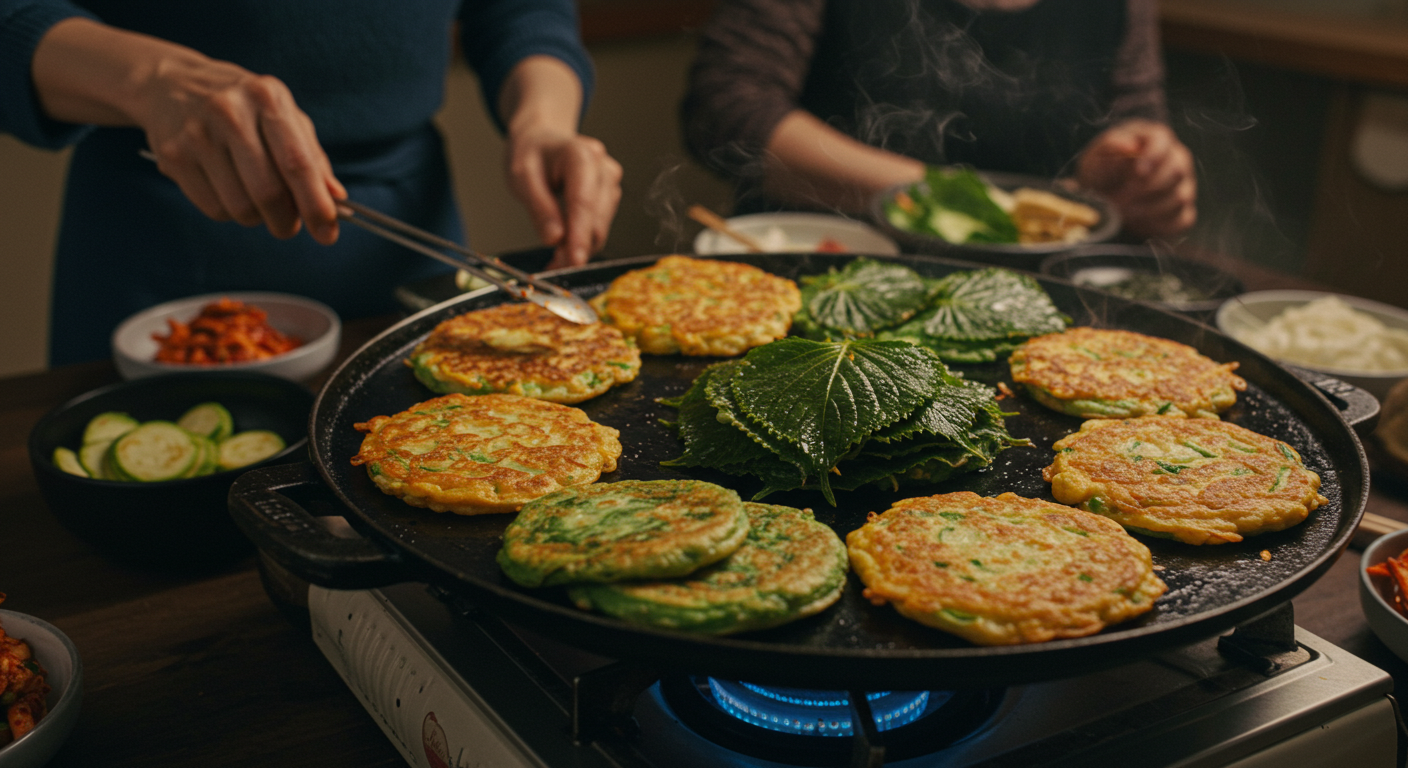Why Do Koreans Fry So Much Food on Holidays? (Korean holiday food)
When Korean holidays approach, the air fills with the smell of oil and sizzling sounds from the kitchen. Mothers wear aprons, ingredients are neatly stacked, and someone is always flipping something in a frying pan. To foreign eyes, this might just look like oily, labor-intensive holiday food. But to Koreans, this is the essence of Korean holiday food—especially jeon (전), which isn’t just a dish, but a ritual, a gesture of care, and a deep cultural tradition rooted in traditional rituals.
First Experience – A Festive Kitchen, A Cultural Shock
My first Korean New Year was spent at a friend’s family home. The kitchen that morning was a battlefield of flavors: zucchini jeon, fish jeon, meatballs, and perilla leaf jeon—each one unfamiliar yet carefully prepared and cooked. I asked, “Why so many kinds?” My friend’s mother smiled and said, “It’s just something we do. It’s not a proper holiday without jeon.”
That sentence carried the weight of a whole tradition. This wasn’t just cooking—it was jeon culture in its purest form.
Learning to Adapt – My First Time Making Jeon
That morning, I put on an apron and tried frying jeon myself. It took more effort than expected: prepping ingredients, managing the oil, flipping each piece at just the right moment. The air was thick with the smell of frying oil and focus. Hours passed, and one by one, plates of golden jeon began to pile up. Through this seemingly simple task, I felt I was participating in a kind of living ritual—a moment of connection through jeon culture.
A Moment of Realization – Jeon as Devotion, Memory, and Togetherness
Watching the family gathered in the kitchen, I realized something deeper. Making jeon isn’t just about food—it’s a collective ceremony. One person chops, another dips in egg, another fries. These roles naturally encourage conversation, laughter, and storytelling. In the midst of sizzling oil, past and present come together, and shared memories are created.
Each piece of jeon carries not just flavor, but warmth from someone’s hands, the care of someone’s eyes, and the sincerity of someone’s heart. Mothers aren’t just feeding families—they are quietly expressing love and jeong (정), the uniquely Korean form of affection. Among all holiday dishes, jeon is the most labor-intensive, and that’s exactly why it’s the most meaningful. The more time it takes, the more heart it holds.
Jeon also holds a sacred place on traditional holiday tables, especially during ancestral rites. It symbolizes traditional rituals—a way to show respect to ancestors and pass down stories and values through generations. In this way, jeon becomes a bridge between past and present, between generations, and between hearts.
This is the soul of Korean holiday food—food as memory, food as ceremony, food as love.
Closing Thoughts – Seeing Jeon Differently
Now, whenever I see jeon, I no longer think of it as “just fried food.” I think of the hands that made it, the time invested, and the emotions behind it. Jeon culture in Korea is not merely culinary—it’s relational. It connects people through time, care, and intention.
Every holiday season, I recall that warm kitchen: the smell of oil, the sound of laughter, the sight of a mother quietly working. Frying jeon, in the end, is about creating memories—together.
Explore deeper into symbolic food culture:
More Than Just a Meal – Korean Food Culture in Drama Scenes
